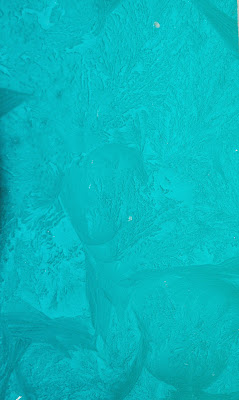8.6.08
UK Art Prize winners Chris Boyd & Penny Klepuzewska
Chris Boyd video artist. Selected Video Stills
This fast rising young Warrington-born artist worked with Tate Online as part of the London 2012 countdown, directing the music promo, ‘And Again’ for Tigs, and has won the Channel Five TV’s Big Art Challenge UK Art Prize. Labelled by controversial art critic, Brian Sewell, as a ‘genius’, his is a name to watch.
What's Coming at WWDC: New iPhone, New Apps and Snow Leopard
For Apple watchers, next week will -- if rumors are correct -- bring a host of reasons to rejoice.
The sold-out Worldwide Developer Conference, or WWDC, happening June 9-13 in San Francisco, is widely expected to be the venue at which company CEO Steve Jobs unveils a second-generation iPhone, a panoply of new applications for the iPhone and iPod Touch, a new MacBook Pro and the next upgrade to OS X, codenamed "Snow Leopard."
The highlight of the week will be Jobs' keynote, scheduled for 10 a.m. on Monday morning. Wired.com will be covering the WWDC keynote live on Gadget Lab.
After the keynote, Apple will take developers behind closed doors for a week of secret briefings. (Press are not invited to the conference sessions, and attendees are bound by a nondisclosure agreement.)
IPhone 2
Most hotly anticipated, of course, is the announcement of a new iPhone, which will probably include support for fast, 3-G wireless data and advanced geotagging features, if not outright GPS capability. As with other WWDC rumors, Apple has been characteristically close-mouthed about these details, refusing to confirm even the existence of a new iPhone. That hasn't stopped bloggers and journalists from engaging in iPhone mania, even going so far as to photograph incoming cargo shipments that may or may not contain new iPhones.
New iPhone Software, New Apps
The iPhone and iPod Touch operating system will also probably receive an upgrade to version 2.0, which, according to leaked shots of posters at the Moscone center, has been rebranded "OS X iPhone." The new OS will also likely include an App Store, integrated with iTunes, enabling users to purchase and install new software.
Apple's software development kit, or SDK, for the iPhone and iPod Touch has been in the wild for several months. Given what the developer community has achieved with the current iPhone, we can expect some exciting new toys. Programmers working with hacked iPhones have gotten their hooks deep into the OS, creating a video recorder, a Last.FM music streaming client and even an NES emulator. Now that an official development platform is available, look for Apple-sanctioned versions of applications like these to begin appearing next week.
It's also likely that users of first-generation iPhones will be able to upgrade their handsets with the new OS. Indie developer Gus Mueller of Flying Meat says, "Developers already have their hands full with the current iPhone as it is, [but] I would love to see GPS in an iPhone."
GPS support is the big question mark. The SDK has support for geotagging photos, which could help turn photo-sharing sites like Flickr into a giant mapping service for photographs. However, it's still unclear whether the new iPhone will contain a GPS unit or whether it will compute its location by triangulating WiFi hotspots and cell towers, as the current model does.
We could, too, see something like the Streetview overlay demonstrated in Google’s Android platform.
New MacBook Pro
There are other hardware expectations, too. One is a new MacBook Pro, the external design of which has remained almost unchanged since the PowerBook G4 back in 2001. Many people want a return to the form factor of the 12” PowerBook, but even if this doesn’t show, a little reorganization is needed. The Pro version is overshadowed by the consumer level MacBook with its new-style keyboard and user-changeable hard drive.
OS X 10.6, Snow Leopard
The rumors say that there is a possibility that Apple will preview OS X 10.6, or Snow Leopard, at the conference. It will drop support for the PowerPC-based Macs, possibly be 64-bit only and will be coming just months after the release of Leopard. According to reports, it will focus on performance enhancements and stability improvements -- two areas that Leopard, aka OS X 10.5, has been criticized for.
An Intel-only release would pave the way for Apple to drop PowerPC support altogether. It would be a controversial move: Many people argue that PowerPC G5 machines are still perfectly capable. However, Apple killed off OS 9 pretty quickly and does not have the best track record when it comes to supporting older hardware (Leopard already requires at least an 867 MHz or faster G4 chip).
It seems likely that moving to a pure 64-bit system would be more appealing to Apple than continuing to support the increasingly long-in-the-tooth PowerPC architecture.
What actually comes out of WWDC is still uncertain however. What we do know is that Jobs will make the most of his semiannual turn in the spotlight to focus as much hype and excitement on Apple's products as he can.
Microscope Shows Cells in 3-D
Not only does the microscope have a 100 nanometer resolution, up from the 200 to 300 nanometer focus of conventional microscopes: by mixing several beams of light to create a lighting pattern that varies both horizontally and vertically, it shows cells in three dimensions.
Better yet, it doesn't require special components and is no harder to use than a standard microscope.
This technique, write the researchers in an article published today in Science, "opens interesting new perspectives for molecular cell biology." Indeed it does. And the pictures are also quite lovely.
Experimental Drug Makes the Immune System Revolt Against Cancer
On Thursday, Micromet Inc. announced that its experimental drug, MT103, had impressive results in a test upon seven Non-Hodgkin's Lymphoma patients. All of them had failed at least three conventional treatments, but showed signs of recovery after receiving doses of a two-headed antibody.
BiTE antibodies, or bispecific T cell engagers, are highly-engineered biological molecules with sticky ends. One side can cling to CD19, a protein found on cancerous B cells, and the other half can grab onto CD3, which is found on cytotoxic T cells. By momentarily drawing those cells together, the drug can coax the cytotoxic T cells into fighting the disease.
Training the immune system to fight cancer may be one of the best ways to keep it from coming back after several rounds of standard treatment. In most cases, surgery and radiation cannot get rid of every last cancer cell. Traditional chemotherapy may halt the growth of tumors, but it will not finish them off. Even after the best treatments, clusters of cancerous or pre-cancerous cells, called micrometastases, often drift around in the body and lodge themselves into vital organs.
To eliminate those lingering killers, many researchers have turned to cancer vaccines, which can convince the body to hunt down stray cancer cells and destroy them when they flare up. BiTE antibodies are another way to harness the defensive power of our immune systems.
When I spoke to Christian Itlin, CEO of Micromet, he said that many blockbuster cancer drugs are made from antibodies, and there is some evidence that they work by stirring up the immune system -- even though that is not how they were meant to operate. His company does intentionally what others have done accidentally -- making drugs that train the body to viciously attack cancer. In theory, their strategy could be used to combat many varieties of the deadly disease, but their treatment for lymphoma happens to be furthest along in the pipeline.
Since this was a very early trial, which was meant meant to assess the safety rather than effectiveness of the new drug, the good news should be a source of cautious optimism. Three more clinical trials of the BiTE antibody are starting in Germany. Two are for lymphoma. The newest one is meant to attack colorectal, gastrointestinal, and lung cancer.
7.6.08
One Sheet of Paper Art
2.6.08
Bruce Lee portrait By Scott blake

Scott Blake used the barcodes from ten Bruce Lee movies to create this 8 foot portrait of the Chinese martial artist. The mosaic tiles are arranged in a zig-zag pattern to break focus like a shockwave from a punch.
Scott also made video interface to scan each barcode on the Bruce Lee face, and a computer plays short fight clip from that movie.
Bar code Art By Scott Blake

Barcode Yourself is a complete, interactive experience in the series of barcode art, created using the personalized data of participants. Enter an individual's gender, weight, height, age and location, and the barcode is formed using real-world data.
The individualized barcode can then be printed, mapped, scanned, even depicted on a t-shirt or coffee mug. Uber-geeks can even test out their barcodes on their next grocery run.
It is in scanning a barcode that the project reveals its humor, like a banner that reads: Disclaimer! Human beings are not merely worth somewhere between one cent and 10 dollars.
It is here, within the confines of an American obsession with "worth," in which the fun begins. Instead of shoes, we can try on another person's barcode. Become a male, 33 years old from Luxembourg, with a perfect body. Congratulations, you're a crisp 10-dollar bill. A teenage girl in Monaco: $5.25. To be scanned for $4.79, you have to be a 40-year old female living in Canada.
The data entered into Barcode Yourself takes a topsy-turvy twist to its personalized end numbers, with the exception of the hard-data that correlates with "location," which tallies up in the Gross Domestic Product of each country.
The calculation an individual's BMI based on the height and weight data reveals the health of an individual, thus those considered underweight or overweight are worth less money. In addition, in comment to the dominance of the United States, all barcodes are published in inches and pounds. A female barcode takes the real-world hit of earning 72 cents less than each dollar earned by a man. The average for age takes on the most comic tone, borrowing from the worlds' most famous 33-year old, Jesus.
With the complexity of mocking self-identity, Barcode Yourself lays out a fresh absurdity in the modern world of consumerism.
Review Lisa Schleipfer
Ice Painting by Canadian artist Gordon Halloran

British Columbia artist Gordon Halloran is displaying vast abstract paintings on large ice surfaces in an exhibit named Pitture Sotto Zero (Paintings Below Zero) in Italy at The Cultural Olympiad.
The artist's work is featured at Fortezza di Fenestrelle. The exhibit uses a cooling system to freeze and re-freeze the ice to create multi-dimensional paintings. The paintings, which have the quality of shiny, transparent marble, hang like stained glass in brilliantly colored icy sheets across the floor and up the walls of the Fortezza's church, in windows, doorways, and the open courtyard at its entrance.
In Canada, Halloran's paintings have been called the quintessential Canadian art form. Halloran and his crew of six have been working since the beginning of the year to freeze and re-freeze paint and water to create deeply complex paintings. The empty church has been used as a workshop.
"Ice itself fascinates me," said Halloran. "Its ephemeral nature constantly freezes and changes temperature, dripping, re-freezing, cracking and breaking. This causes the color to migrate along the path of the crystal structure, and creates fantastic complexity and a three-dimensional quality to the paintings."The vastness of the Canadian winter landscape as well as the artist's experience playing hockey as a boy pushed the artist to work with large ice surfaces, such as Olympic-sized ice rinks where his paintings have been exhibited in Canada, the World Figure Skating Championships, the Calgary Olympic Plaza, and other arenas.
The Cultural Olympiad is a festival that aims to put the cultural aspect of the Olympics on the same footing as the games.
1.6.08
Jeonju: helping film-makers realise their dreams











